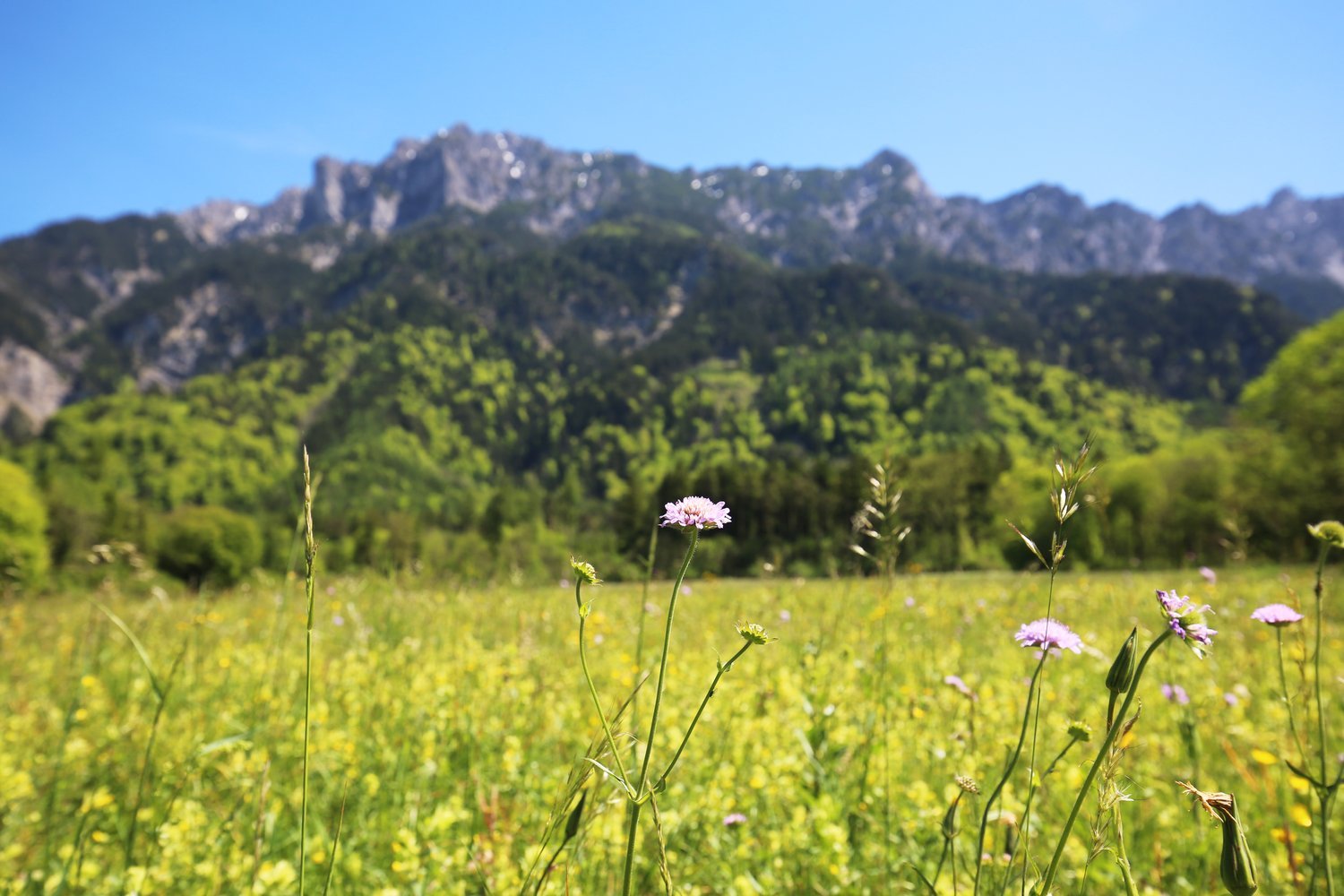Study on What We Know about Biodiversity in Liechtenstein
Liechtenstein, with its area of approximately 160 square kilometers, is a small country in terms of size. However, it boasts a variety of natural landscapes, ranging from the lowlands to high-altitude regions. But what do we really know about biodiversity in Liechtenstein, and how can we advocate for its preservation?
This question was explored by certified biologist Rudolf Staub from RENAT (Office for Spatial Development and Nature) on behalf of the Hilti Foundation. In two studies (2021, 2023), he examined the documentation and development of biodiversity and the landscape in Liechtenstein. While the first study provided an overview of the data collected in Liechtenstein, the follow-up study analyzed changes in various natural areas and species over the past decades. The goal was to identify potential areas for action to promote biodiversity for the foundation.
Focus of the research: Special habitats and species
An analysis of the current data situation in Liechtenstein in the study "Natural Science Research and Monitoring" (2021) revealed that, until 1970, Liechtenstein was poorly researched in terms of natural science. In recent decades, however, a significant amount of knowledge has been gained relative to the country's size—albeit with a clear focus on marginal phenomena and their unique characteristics. Biological diversity and developments in "normal landscapes" remain underrepresented to this day. In neighboring countries, standardized procedures in the form of biodiversity monitoring have been established, which are very long-term and typically fall under the responsibility of the state. Currently, Liechtenstein does not have such monitoring in place. Given the biodiversity crisis, with species decline and decreasing animal populations, the focus should increasingly be on general biodiversity, including common species, according to the preliminary conclusion.
From the Alpine Rhine to the High Altitudes of Malbun
The second study aimed to gather scientific data on the development of biological diversity in various natural areas. The report "Model Areas and Measures" (2023) examined a model area approximately 1,000 meters wide (transects) that stretches from Bendern to Malbun, encompassing as many different natural areas as possible. Over the past decades, significant changes have been observed in this exemplary landscape section, such as increased land sealing, expanding agricultural areas with uniform planting, and the loss of valuable habitats due to intensification or abandonment of use. Together with the 2021 study, the second study provides a factual basis for defining measures to protect biodiversity in Liechtenstein.
Raising awareness: communicating knowledge about biodiversity
The general population's understanding of various aspects and connections of biodiversity is still underdeveloped. However, this knowledge is essential for both the acceptance and understanding of different (protective) measures. Therefore, raising public awareness can make a significant contribution to the cause of biodiversity and its preservation. The Hilti Foundation has identified three possible areas of activity to promote biodiversity. Central to this is public outreach. The independence and flexibility of the Hilti Foundation are key advantages in pursuing new approaches to raising public awareness about biodiversity and landscape development.
“We are at the beginning of an exciting project. With the factual foundation provided by these two studies, we, as a Liechtenstein foundation, can now proactively act for biodiversity in the country. Together with a great network of experts, we aim to contribute to raising public awareness over the coming years and ultimately have a feedback effect on politics.”
The two studies were conducted by Rudolf Staub (RENAT) on behalf of the Hilti Foundation. Rudolf Staub is a certified biologist specializing in ecology, landscape, water, and spatial development. The content of the studies was supported and guided by a professional project group, including Dr. Mario F. Broggi, Dr. Felix Näscher, and Dr. Andreas Moser.
Studies Available for Download

